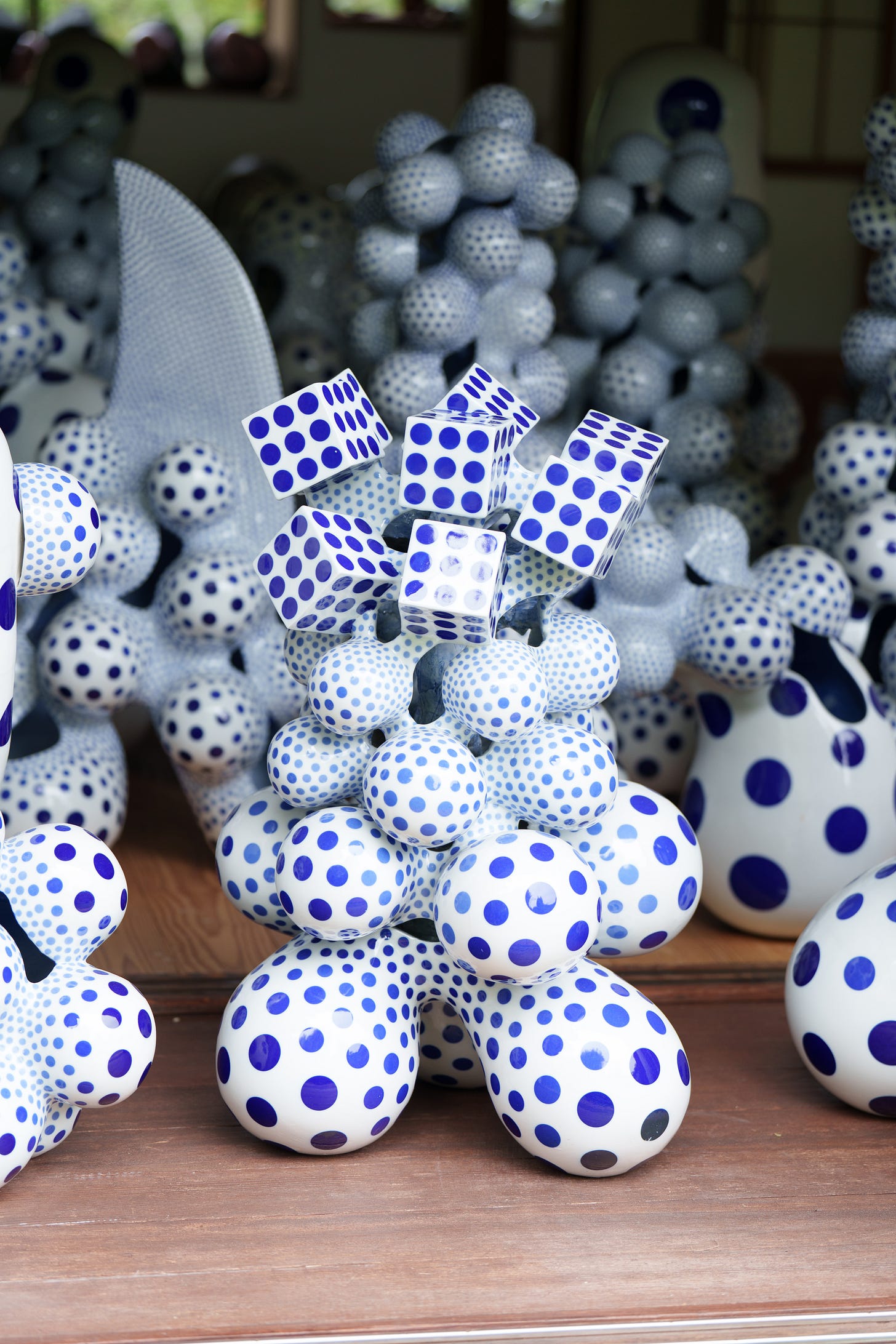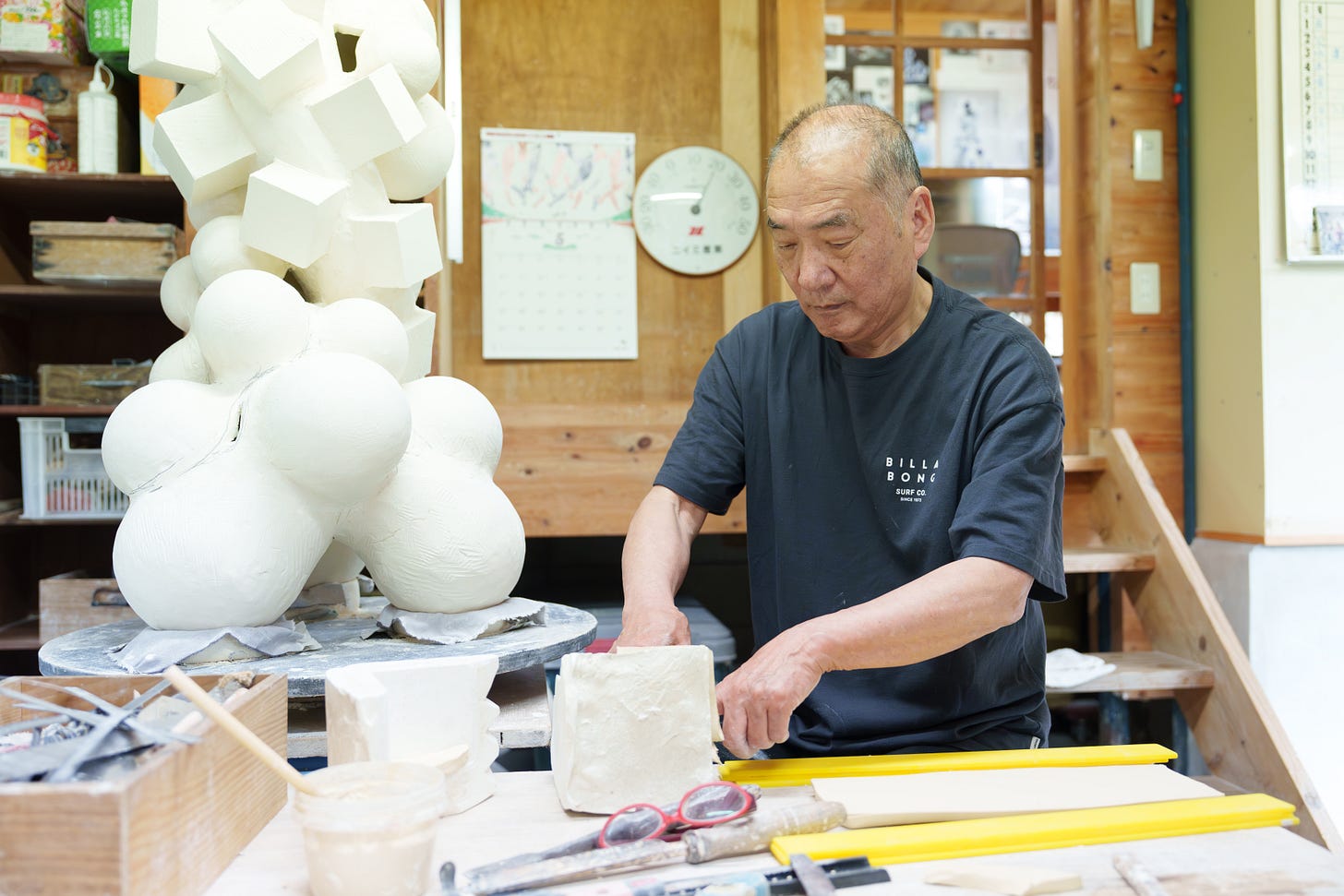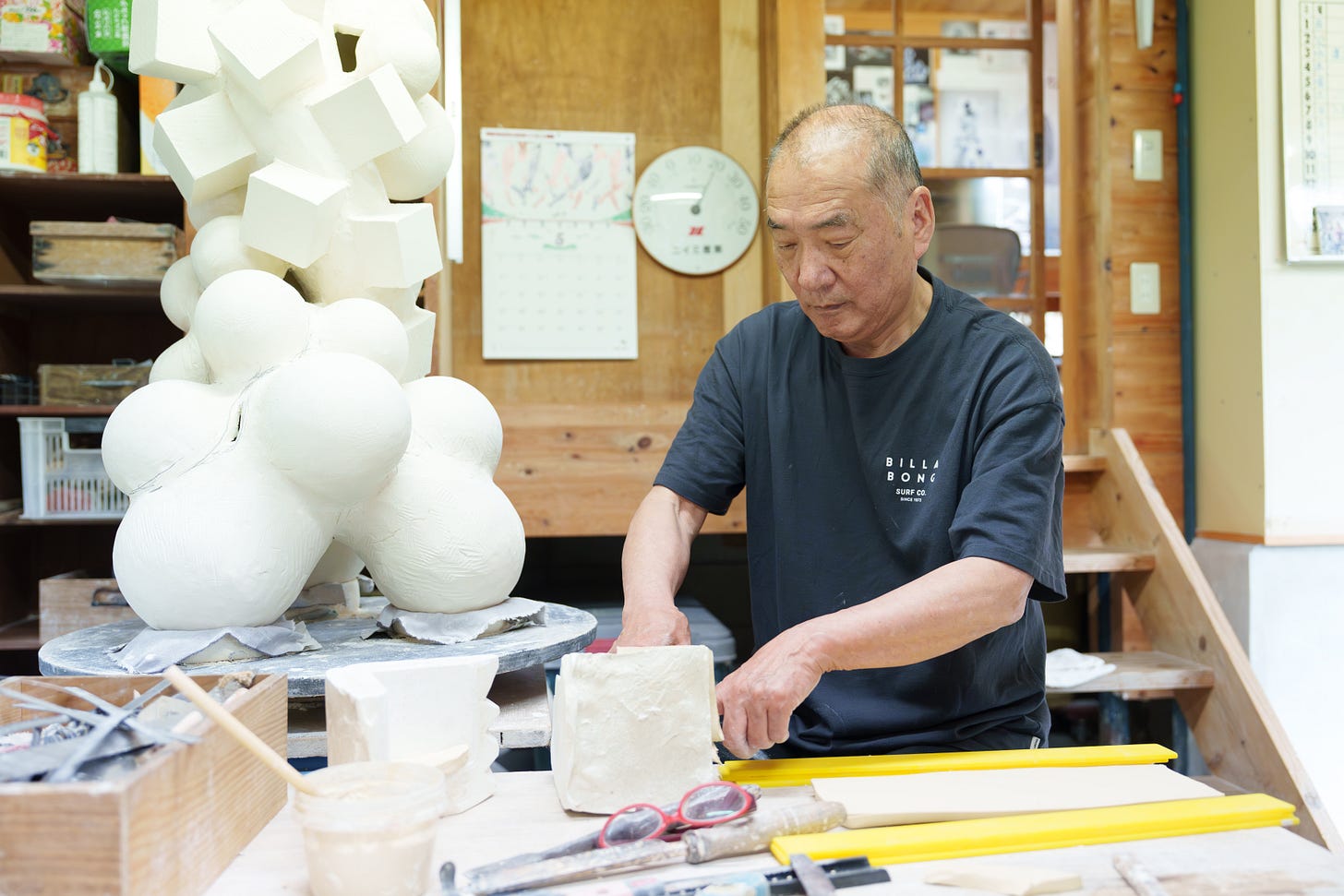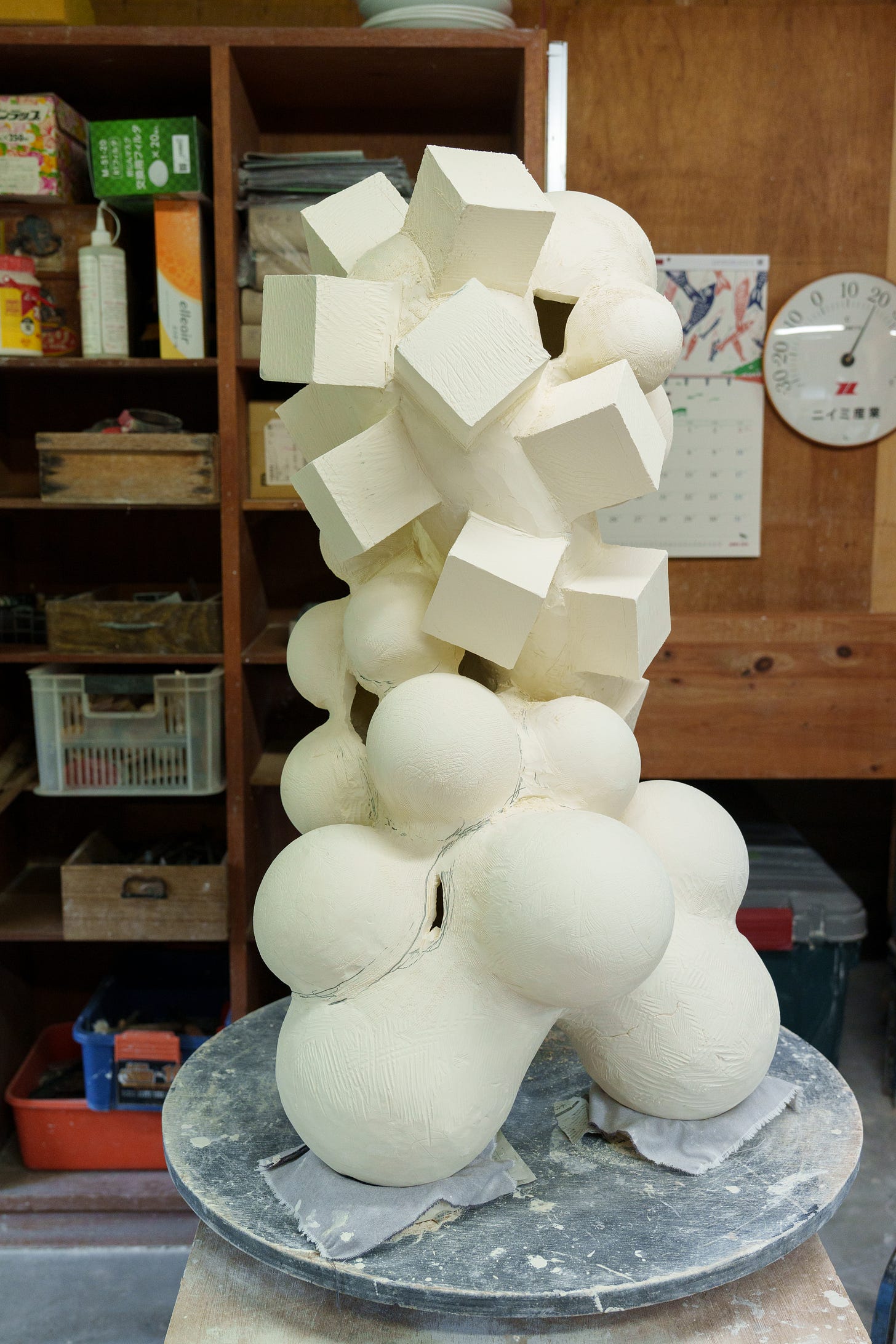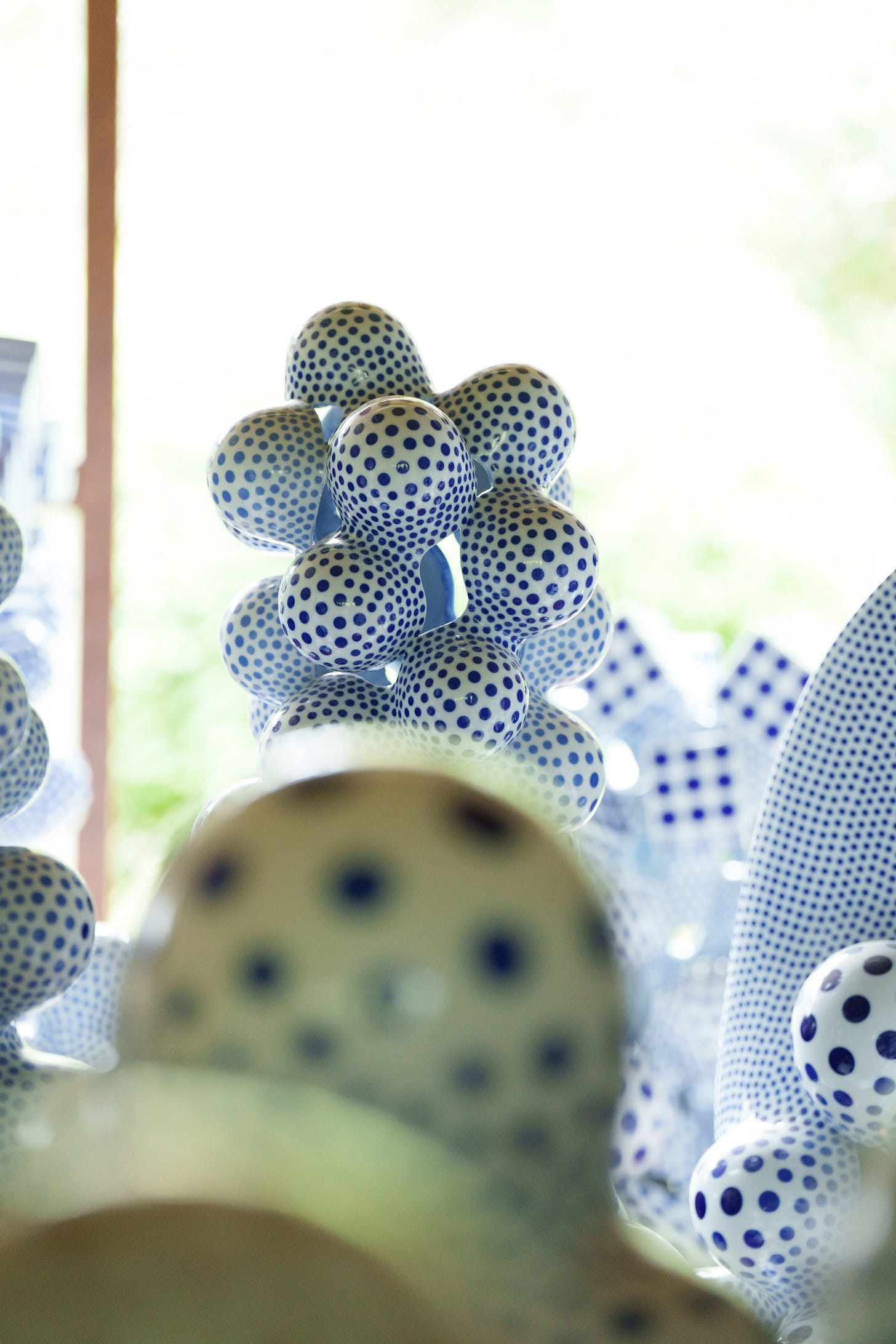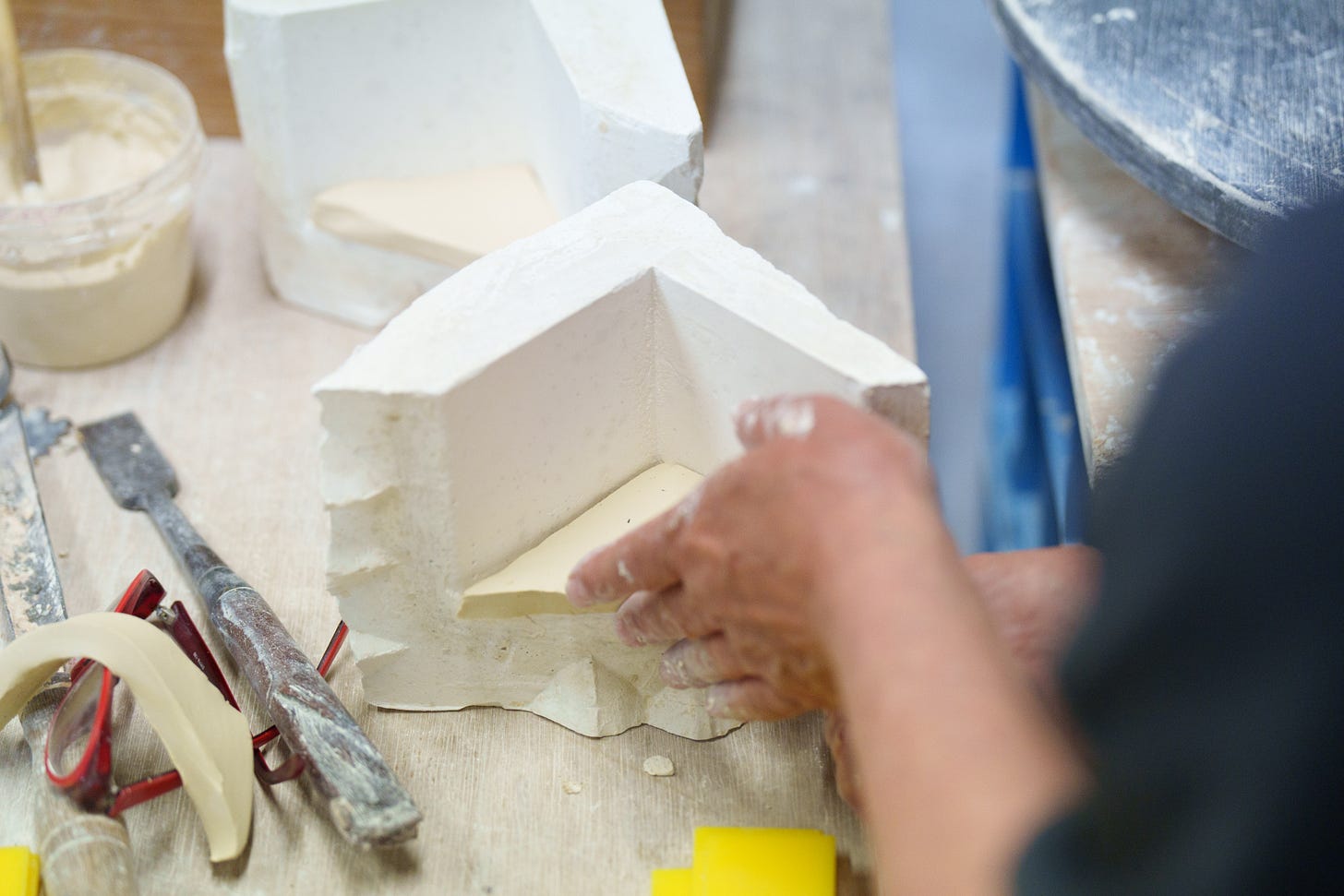Mino: The Kingdom of Pottery
Harumi Nakashima (b. 1950)
MINO: THE KINGDOM OF POTTERY
The region of Mino, in the Gifu Prefecture of Japan, has a long, rich history dating to the 7th century A.D., gaining prominence through the production of ceramics for the tea ceremony. Today, it remains a significant center of ceramic production. Many ceramicists who work in Mino create contemporary clay art. Do not think of the traditional tea bowl, which has been the touchstone of Japanese ceramics for centuries, and still made by most artists. While contemporary artists are connected to that tradition, they have elevated the clay to new horizons.
Harumi Nakashima (b. 1950)
For award-winning ceramicist Harumi Nakashima, clay is a medium for creating non-functional, contemporary art. A stream runs through his sculpture garden at his picturesque home studio in Ena City, which he shares with his wife, Katsuko, and daughter, Mio Takatsu, both ceramicists as well. Nakashima hand-builds sculptures in porcelain, in geometrical forms which he molds, one by one. Inspired by European surrealists, and rooted in the tradition of blue-and-white Japanese porcelain, Nakashima infused the two while forging a distinctive and personal vocabulary, which charged porcelain with contemporary art. The polka dots have become his logo, as his pieces resemble creatures from a science fiction film.
A graduate in ceramics from the Osaka University of Arts, he has been a pupil of the Sodeisha Movement, founded in 1948 in Japan, as a reaction against the exclusive use of clay to craft functionality and folk-driven objects, calling for a radical approach to clay. The founders of the Movement called for creating non-functional objects, to bring clay toward abstraction and conceptual contemporary art, and to engage with international art movements. This movement helped shape his oeuvre, as he constantly merged ceramics and sculpture, using clay to model unorthodox forms, and to express his narratives.
Nakashima’s greatness lies in his language, and how he can allow the plasticity and sensuality of the white porcelain to speak. His pieces are intensive and sensual, affected by the tension between the structured geometry and the flowing, free forms, between traditions and innovations, between the repetitive and the unique. Each sculpture is composed of minor elements, which he hand-builds in molds and merges into abstract, powerful, and complex forms. Sanding the seams is labor-intensive, but it is necessary to achieve the immaculate surfaces. After the second firing, once the piece is covered with glazing, the dots are painted using cobalt blue over the body. With his inventive language bringing the concepts of the Sodeisha Movement into the 21st century, Harumi Nakashima stands at the forefront of contemporary Japanese clay artl.
Photography by © Takuro Kawamoto.
This visit was enabled thanks to Keiko Art International.
.



